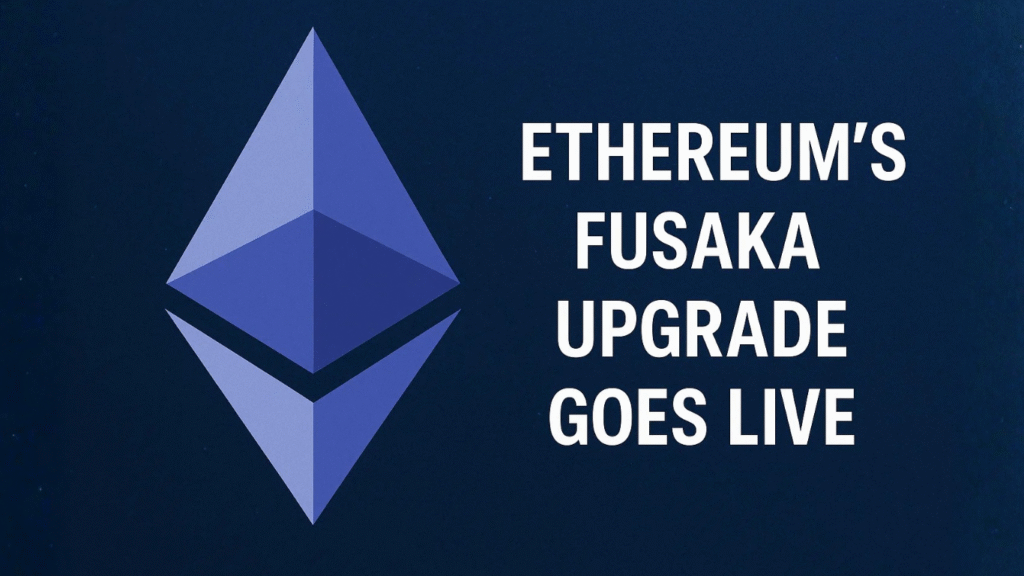The last stage previously Ethereum’s official mainnet rollout which is set for December 3, 2025 has been completed with the successful launch of the highly expected Fusaka update on its final testnet Hoodi. The update is a significant advancement in Ethereum’s long-term development path by improving the blockchain’s scalability, efficiency and security.
The move to Fusaka on the Hoodi testnet went well says Ethereum client developer Nethermind who defined it as “another key milestone on the road to Fusaka.” This test’s success shows that there won’t be any significant technical problems when the Ethereum mainnet adopts the update.
Important Advancements in Fusaka
In order to increase the network’s speed and efficiency Fusaka offers a number of Ethereum Improvement Proposals (EIPs).
The Peer Data Availability Sampling or PeerDAS as defined by EIP-7594 enables validators to read smaller data fragments rather than complete data blobs. This enhancement will boost node efficiency and decrease processing burdensespecially in Layer 2 (L2) networks that manage massive data volumes.
The EIP-7825 and EIP-7935 are primarily concerned with increasing the gas limit of Ethereum and improving transaction efficiency. By preparing Ethereum for parallel execution several smart contracts can be handled concurrently, increasing scalability and speed.
Zero-knowledge rollups (ZK-rollups) an important method for reducing transaction costs while increasing privacy are additionally improved by additional ideas in Fusaka.
A Rollout in Three Stages
The Fusaka update will be executed in three phases.
Fusaka fork activation on the mainnet.
The implementation of an EIP that expands the data storage capacity of blobs.
To maximize network data flow and increase blob capacity a second hard fork is necessary.
The next significant update Glamsterdam, which continues the “Surge” phase of Ethereum’s roadmap and aims to make the network even more scalable and efficient will be the focus of Ethereum developers when Fusaka is fully implemented.
Changes in the Ethereum Foundation’s Leadership
The Ethereum Foundation is going through a leadership change at the time of the upgrade. In recent months a number of longtime contributors have quit the group due to worries about the project’s future. The Ethereum developer community is still engaged and dedicated to sustaining the network’s expansion and innovation in spite of these internal changes.
Market Response and Prospects
Due to growing institutional interest mainly through exchange-traded funds and corporate treasury holdings ether (ETH) has done well this year reaching an all-time high. Upgrades like Fusaka according to analysts it would increase Ethereum’s attractiveness to investors and companies by speeding up transactions and cutting expenses.
Boosting Ethereum’s standing
The Fusaka also challenges the “blockchain trilemma” which Ethereum co-founder Vitalik Buterin defined as striking a balance between decentralization, security and scalability are one of the most significant issues in blockchain technology. Ethereum has historically placed a high priority on security and decentralization but Fusaka helps overcome the scalability gap. Also it enabling Ethereum can compete with speedier networks like Solana and Sui.
The Pectra update from six months ago which concentrated on enhancing staking performance and wallet usability is followed by the Fusaka hard fork. When taken as a whole these changes demonstrate Ethereum’s consistent development toward a more potent and approachable blockchain for both developers and users worldwide.


